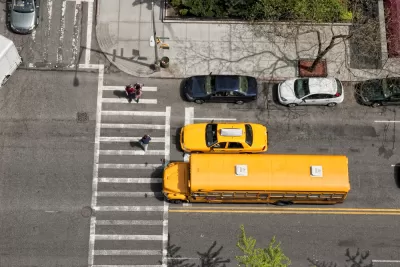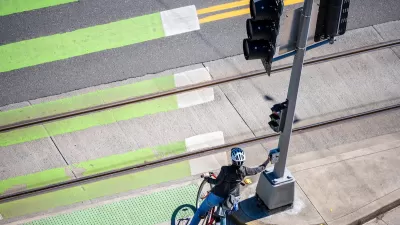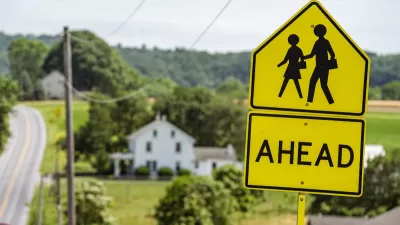In a radical shift from prior policy that singled out passenger safety, new cars could be required to include more features that protect people outside the vehicle.

New cars could soon be required to include more safety features as the National Highway Traffic Safety Administration (NHTSA) seeks ways to combat a rising number of pedestrian deaths, reports Andrew J. Hawkins.
For the first time, NHTSA will consider the inclusion of advanced driver-assistance system (ADAS — sorry for all the acronyms!) features, like automatic emergency braking, blind-spot detection, and lane-keep assistance. These ADAS features, which are quickly becoming standard in most vehicles today, could become essential criteria for a five-star safety rating from the government.
This signals a shift from prior safety standards, which only assessed the safety of a car's occupants through crash tests, but failed to account for the safety of pedestrians or cyclists. "NHTSA acknowledges that this is no longer a tenable system," writes Hawkins. "For the first time ever, NCAP includes technology recommendations not only for drivers and passengers but for road users outside the vehicle, like pedestrians," according to a statement by Steven Cliff, deputy administrator at NHTSA.
"The idea is to rate automobile safety on a host of new technologies that can stop risky driving behavior before it even occurs. As a result, NCAP tests will become more stringent, and vehicles that don’t include these features are likely to receive a lower rating."
FULL STORY: The US government finally realizes that cars kill people outside the vehicle, too

Planetizen Federal Action Tracker
A weekly monitor of how Trump’s orders and actions are impacting planners and planning in America.

Maui's Vacation Rental Debate Turns Ugly
Verbal attacks, misinformation campaigns and fistfights plague a high-stakes debate to convert thousands of vacation rentals into long-term housing.

San Francisco Suspends Traffic Calming Amidst Record Deaths
Citing “a challenging fiscal landscape,” the city will cease the program on the heels of 42 traffic deaths, including 24 pedestrians.

Amtrak Rolls Out New Orleans to Alabama “Mardi Gras” Train
The new service will operate morning and evening departures between Mobile and New Orleans.

The Subversive Car-Free Guide to Trump's Great American Road Trip
Car-free ways to access Chicagoland’s best tourist attractions.

San Antonio and Austin are Fusing Into one Massive Megaregion
The region spanning the two central Texas cities is growing fast, posing challenges for local infrastructure and water supplies.
Urban Design for Planners 1: Software Tools
This six-course series explores essential urban design concepts using open source software and equips planners with the tools they need to participate fully in the urban design process.
Planning for Universal Design
Learn the tools for implementing Universal Design in planning regulations.
Heyer Gruel & Associates PA
JM Goldson LLC
Custer County Colorado
City of Camden Redevelopment Agency
City of Astoria
Transportation Research & Education Center (TREC) at Portland State University
Jefferson Parish Government
Camden Redevelopment Agency
City of Claremont





























